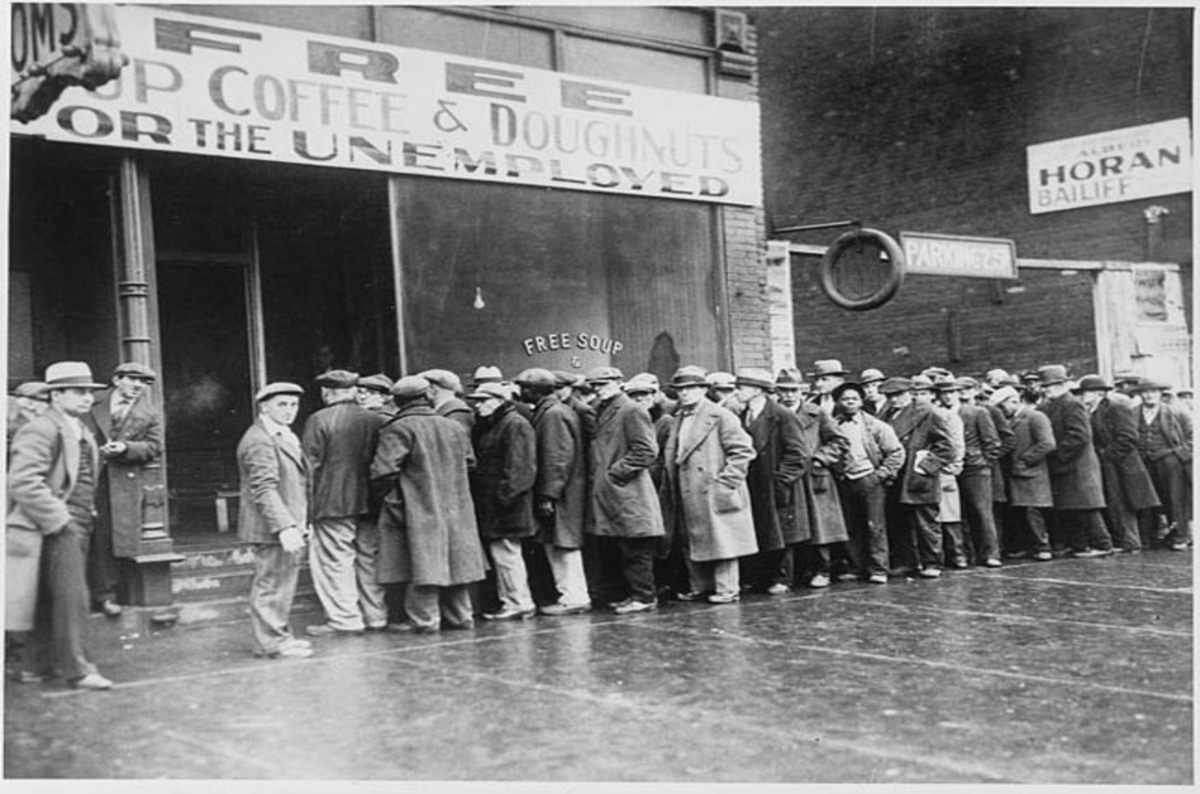The Great Depression was a Worldwide Economic Depression that lasted for 10 years. There are many severe causes of the Great depression. Began after the stock market crash, this led to the panic of Wall Street and obligated millions of investors. This depression damaged both rich and poor. In some countries unemployment even rose to 33%. It was the worst economic crises in the history of the industrialized world. One cannot explain the condition of Great Depression in words. Ever wondered what were the causes of the Great depression of 1929?

Let us look into top 5 causes of The Great Depression of 1929!
1. The stock market crash of 1929.

The market reached great heights that very summer had begun to decline in September. This nightmare began on “Black Thursday”, 24 October 1929. And 5 days later on “Black Tuesday” lost 12 percent of its value. Just after two months of the original crash in October, stockholders had lost more than $40 billion dollars. This became one of the causes of the great depression of 1929. As consumer lost confidence in the wake of the stock market crash, there was a descent in spending and investment, this led to slow down production for factories and businesses. This was the beginning of firing their workers. There were few lucky enough to remain employed, wages fell and buying power decreased. Here’s why the stock market exists.
2. Bank Failures

Banks began to fail as debtors defaulted on debt and depositors attempted to withdraw their deposits altogether, triggering multiple bank runs. The guarantees of the Government and Federal Reserve banking regulations to prevent such panics were inefficient. Bank failures led to the loss of billions of dollars in assets. Thus, becoming one of the major causes of the Great depression of 1929.
Outstanding debts became heavier for people because prices and incomes fell by 20–50% but the debts remained at the same dollar amount. After the panic of 1929, and during the first 10 months of 1930, 744 US banks failed. In the 1930s over 9,000 banks failed. The Bank deposits were uninsured.People started losing their money, surviving banks, unsure of the economic situation and concerned for their own survival, stopped being as willing to create new loans. This situation leads to fewer expenditures. By April 1933 around $7 billion were frozen in bank deposits.
Failures snowballed as desperate bankers called in loans, which the borrowers did not have time or money to repay. With future profits looking poor, capital investment and construction slowed or completely ceased. Watchful of the worsening future prospects, the banks that survived became even more conservative in their lending. Banks built up their capital reserves and made fewer loans, which intensified deflationary pressures. A vicious cycle developed and the downward spiral accelerated.
3. Reduction in Purchasing Across the Board

Individuals from all classes stopped purchasing items, because of the fear of more economic woes. This led to a reduction in the items produced and caused a reduction in the workforce. Thus, People continued to lose their jobs and thus people were unable to keep up with paying for items they had bought through installment plans. The inventory began to accumulate more and more. The rate of unemployment rose above 25%, worsening the situation and becoming one of the greatest causes of the Great depression of 1929.
People’s investment remains worthless, their savings highly diminished, and credit tight to nonexistent, spending by consumers and companies alike ground to a standstill.
4. American Economic Policy with Europe
American Economic Policy is also one of the greatest causes of the Great depression. As businesses began failing, the government created the Smoot-Hawley Tariff in 1930 to help protect American companies. There was less trade between America and foreign countries along with some economic retaliation because of high tax for imports.
The government had to act. Then Congress passed the Tariff Act of 1930, better known as the Smoot-Hawley Tariff. The measure imposed near-record tax rates on a wide range of imported goods. A number of American trading partners fought back by imposing tariffs on goods made by the U.S. . As a result, world trade fell by two-thirds between 1929 and 1934. By then, Franklin Roosevelt and a Democrat-controlled Congress passed new legislation allowing the president to negotiate significantly lower tariff rates with other nations.
5. Drought Conditions

The environmental destruction is one of the major causes of the Great depression of 1929. A years-long drought coupled with poor farming practices created a vast region from southeast Colorado to the Texas panhandle that came to be called the Dust Bowl. The massive dust storms choked towns, killed crops and livestock. It damaged untold millions and left them in agony. Thousands fled the region as the economy collapsed, something chronicled in his masterpiece “The Grapes of Wrath”. It would be years, if not decades, before the region’s environment recovered.
After years of the Great depression, USA has become the superpower. Here’s how it became a superpower.
Like us on Facebook
Follow us on Instagram